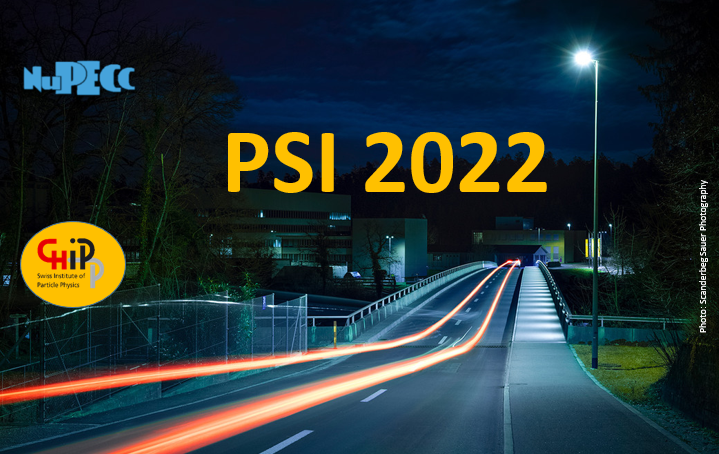Speaker
Description
Many theoretical models that expand boundaries of the Standard Model of elementary particles predict the existence of the hidden sector of particles, which can very weakly interact with the visible sector of Standard Model particles. The exchange of virtual particles characterizes a new type of spin-spin interactions, which are different from the well-known electromagnetic ones. The Authors of Refs [1], [2] made an attempt to construct a theoretical model for describing weak spin-spin interactions also using the gauge approach. It was predicted that invariance of Lagrangian field theory under a class of the coordinate-dependent Lorentz group of transformations requires the introduction of a massless axial vector gauge field which gives rise to a super-weak long-range spin-spin force in vacuum which is attractive for parallel spins. According to the theoretical model the axial-vector field couples to the axial-vector current of the Dirac field and to the photon field or to the neutral spin − 1 field. At that initially axial-vector field was introduced in Ref. [3] for the
purpose to give stability to the classical electron and also to make quantum electrodynamics divergence free.
The search for exotic new forces and interactions generated by the spin of matter particles and electromagnetic fields has a long history [4]. Since, as predicted, the coupling constant g of new fields is very small, their detection in force interactions becomes problematic and requires the precise measurements [5] - [8]. On the other hand, such fields must be truly highly penetrating. We are guided by the idea that optical experiments can be among the most accurate. That is why we offer optical effects of axial-vector fields. It was predicted that a constant axial-vector field leads to a change in the polarization of the wave that passes through its region of action. Axial-vector gauge fields must interact with electromagnetic fields, since photons carry spin.
A system of field equations was obtained for the evolution of the vector potential of
an electromagnetic wave, where the action of an uniform axial-vector field enters the
source on the right side of the equation. A linearly polarized electromagnetic wave acquires an orthogonal component of the electric field strength and becomes a wave
with circular polarization. The area of action of the axial-vector field plays the role of some active medium, passing through which the electromagnetic wave acquires an
orthogonal component of the strength of the electric and magnetic fields, which leads to the appearance of elliptical polarization. In this case, the orthogonal component of the electric field strength is proportional to the hyperbolic sine, which is proportional to the
square of the coupling constant of the axial vector and electromagnetic fields. The domain of action of the field for the wave plays the role of some anisotropic medium, which in itself is a very interesting consequence of the theory. For the optical wavelength range this effect can be detected only in the noise. If we create a closed system of
propagation of an electromagnetic wave, which must experience repeated action of the axial-vector field, then the amplitude of the perpendicular component of the electric field in the wave will increase.
Since the proof of the influence of new fields on the wave amplitude as a result of
predicting the smallness of the coupling constant may encounter significant difficulties, we will consider the case of the action of a wave axial-vector field. We assume that in the case of considering a wave axial-vector field, effects can be obtained that will be simpler in their experimental implementation. The case of the action of a wave axial-vector field at the frequency Ω was considered, and a new effect of modulation of the initial electromagnetic wave was predicted. It was shown that in the process of interaction of an electromagnetic wave with a new field, additional harmonics arise at frequencies ω ± Ω. The original electromagnetic wave propagating at the frequency ω will decay into three waves, one of which also moves at the original frequency ω, and two harmonics have frequencies ω ± Ω. Thus, we have considered the problem of the influence of a new physical field generated by the spin of an electromagnetic field on the properties of an electromagnetic wave. We theoretically propose a new optical physics based method which can be used to search for an exotic spin-dependent interaction mediated of the axial-vector gauge bosons.
The work of MIT was supported by the Russian Science Foundation under the grant 22-72-00036.
- P. C. Naik, T. Pradhan, Long-ray interaction between spins. Journal of Physics A: Mathematical and
General, 14(10), 2795 (1981). - T. Pradhan, R. P. Malik, P. C. Naik, The fifth interaction: universal long range force between spins.
Pramana - J. Phys. 24, 77 (1985). - T. Pradhan and A. Lahiri, Finite quantum electrodynamics, Phys. Rev. D. 10, 1872 (1974).
- M. Safronova, D. Budker, D. DeMille, D. F. J. Kimball, A. Derevianko, and C. W. Clark, Search for new
physics with atoms and molecules, Rev. Mod. Phys. 90(2), 025008 (2018). - Joerg Jaeckel and Andreas Ringwald, The Low-Energy Frontier of Particle Physics, Annu. Rev. Nucl.
Part. Sci. 60:405 (2010). - Moody J. E., Wilczek F., New macroscopic forces? Phys. Rev. D Part. Fields 30, 130 (1984).
- C. E. Cramer, A torsion balance search for spin-coupled forces, thesis, Univ. of Washington (2007).
- Vasilakis G., Brown J. M., Kornack T. W., Romalis M. V., Limits on new long range nuclear spindependent
forces set with a K-3He comagnetometer. Phys. Rev. Lett. 103, 261801 (2009).
